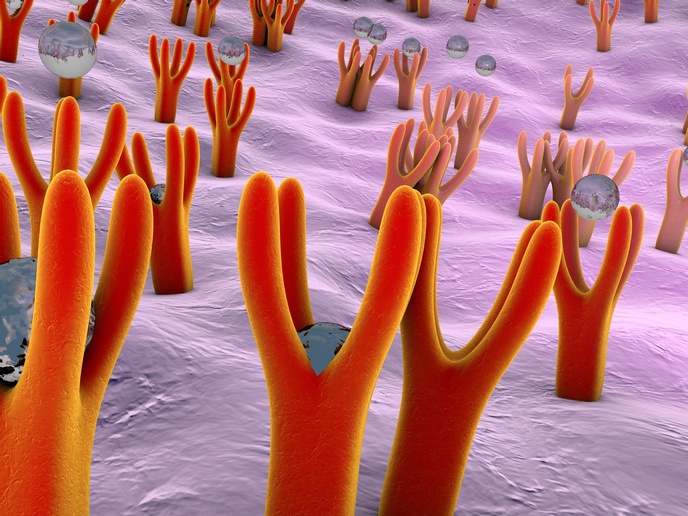A closer look at how cells respond to mechanical forces
Equipped with specialised proteins located within their plasma membrane, cells can respond to a wide range of biochemical and mechanical stimuli that come from their surroundings. “When these specialised receptors sense the presence of mechanical forces at the cell surface, they change their conformational state and engage with other molecular adapters to relay this information to the cell’s interior,” explains Maria Garcia-Parajo(opens in new window), a research professor at the Institute of Photonic Sciences(opens in new window) (ICFO). When this process works, it enables cell development, wound repair and tissue maintenance. But why doesn’t it always work? To answer that question, the EU-funded NANO-MEMEC project took a deep dive into the cell’s plasma membrane.
First-of-their-kind tools and methods
While scientists know that the way membrane receptors dynamically organise at the plasma membrane plays a crucial role in their function and cell response, they don’t fully understand how this organisation is sensitive to mechanical stimuli. “This is the area that the NANO-MEMEC project looked to explore,” says Garcia-Parajo, the project’s principal investigator. But doing so was easier said than done. That’s because the organisation of molecules at the plasma membrane starts at the nanometre scale, with multiple – and different – molecules coming together in a dynamic fashion. This required that the project develop first-of-their-kind tools for visualising how different individual molecules come together in the plane of the membrane to form nano-platforms of biological activity. Researchers also devised methods to exert mechanical perturbations fully compatible with these imaging methods. “These are major technological breakthroughs that the scientific community can already start using in their research,” adds Garcia-Parajo.
A closer look at membrane receptors
With these tools in hand, the project, which received support from the European Research Council(opens in new window), took a close look at the spatial and temporal organisation of different membrane receptors. What they saw was that the cortical actin cytoskeleton, a specialised actin and myosin network located just beneath the cell membrane, plays an important role in regulating the organisation of plasma membrane receptors. This role applies even to those receptors that do not directly interact with the actin. Researchers also discovered that the mechanical forces directly affect the cortical actomyosin machinery, which in turn remodels the organisation of the plasma membrane. This mechanism is general as it does not depend on specific receptors or molecules and thus likely operates in different contexts or cells.
How cell response impacts overall health
By providing new tools and insights into the spatial and temporal organisation of membrane receptors, the NANO-MEMEC project has advanced our understanding of how cells respond to mechanical forces and why sometimes this process doesn’t work. “Although our project has been inherently fundamental, it’s opened the door to studying how dysfunction in the way receptors sense and/or respond to mechanical stimuli impacts our overall health and causes diseases like cancer,” she concludes. Garcia-Parajo is currently working to uncover feedback loops between the membrane and the cortical actomyosin machinery. In doing so, she hopes to demonstrate that a physical parameter such as membrane tension is capable of bypassing biochemical receptor activation to trigger receptor signalling pathways at the plasma membrane.







